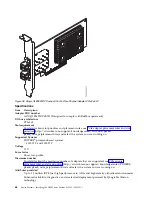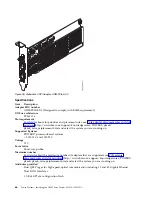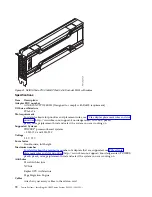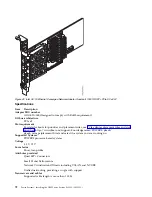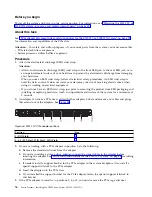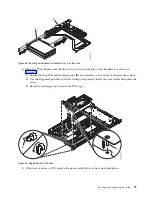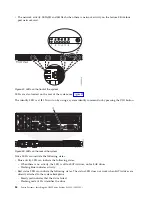
Operating system or partition requirements
If you are installing a new feature, ensure that you have the software that is required to support the new
feature and that you determine whether any prerequisites must be met for this feature and attaching
devices. To check for operating system and partition requirements, see one of the following links:
v
The latest version of enabling libraries and utilities may be downloaded from Fix Central.
(http://www.ibm.com/support/fixcentral/)
v
IBM Prerequisite website (www-912.ibm.com/e_dir/eServerPrereq.nsf)
v
IBM SSIC (System Storage Interoperation Center) (http://www-03.ibm.com/systems/support/storage/
ssic/interoperability.wss)
v
The latest version of the device driver or iprutils can be downloaded from the IBM Service and
Productivity Tools website. (http://www14.software.ibm.com/webapp/set2/sas/f/lopdiags/
home.html)
v
For support details, see the Linux Alert website. (www14.software.ibm.com/webapp/set2/sas/f/
lopdiags/info/LinuxAlerts.html)
PCIe3 1.6 TB NVMe Flash Adapter (FC EKN2)
Learn about the specifications and operating system requirements for feature code (FC) EKN2 adapters.
Overview
See FC EKN3 for an adapter with more capacity.
The PCIe3 1.6 TB NVMe Flash Adapter is a PCI Express (PCIe) generation 3 (Gen3) x4 adapter. The
adapter can be used in either a x8 or x16 PCIe (Gen3) slot in the system and uses Non-Volatile Memory
Express (NVMe). NVMe is a high performance software interface that can read/write flash memory.
Compared to a SAS or SATA SSD, the NVMe Flash adapter provides more read/write input/output
operations per second (IOPS) and larger throughput (GB/sec). The NVMe Flash Adapter is read intensive
and is not designed for high write intensive workloads. At about 8,760 to 17,000 TB of writes to the
adapter, it will be at its maximum projected write capability. The nature of the workload has a great
impact on the maximum write capacity. If a high percentage of more sequentially oriented writes is used
instead of random writes, the maximum write capacity will be closer to the larger value in the range. In
the case of a high percentage of random writes, the maximum will be closer to the smaller value in the
range. Writes past the adapter's maximum write capacity will continue to work for some period of time,
but much more slowly. A Predictive Failure Analysis message will indicate that it is time to replace the
adapter if enabled by the system administrator. After the warranty period, if the maximum write
capability is achieved, the adapter's replacement is not covered under IBM maintenance. This adapter has
protection against single Flash channel failures. To prevent the entire adapter from failing, software RAID
should be used. For high value applications where the content in the adapter must be protected,
additional NVMe Flash adapters with OS mirroring or software Redundant Array of Independent Disks
(RAID) are recommended. This adapter is not supported in the PCIe Gen3 I/O drawer.
Important:
Before removing a NVMe Flash adapter, ensure that all data on the adapter or the array that
contains the adapter is backed up. Restore the data after the adapter is replaced.
Installing and configuring the system
73
Содержание Power System S821LC
Страница 1: ...Power Systems Installing the IBM Power System S821LC 8001 12C IBM...
Страница 2: ......
Страница 3: ...Power Systems Installing the IBM Power System S821LC 8001 12C IBM...
Страница 16: ...xiv Power Systems Installing the IBM Power System S821LC 8001 12C...
Страница 117: ...Figure 62 Connecting the power cords to the system Installing and configuring the system 101...
Страница 118: ...102 Power Systems Installing the IBM Power System S821LC 8001 12C...
Страница 130: ...114 Power Systems Installing the IBM Power System S821LC 8001 12C...
Страница 131: ......
Страница 132: ...IBM Printed in USA...






